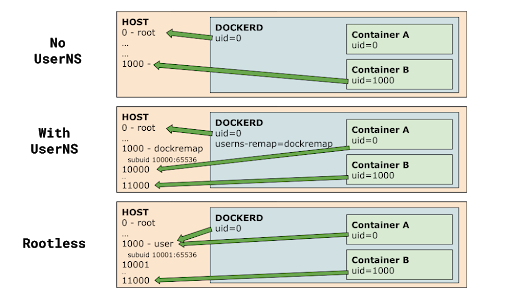Tõnis Tiigi, a software engineer at Docker and also a maintainer of Moby/Docker engine, in his recent post on Medium, explained how users can now leverage Docker’s non-root user privileges with Docker 19.03 release. He explains the Docker engine provides functionalities which are often tightly coupled to that of the Linux Kernel. For instance, to create namespaces in Linux users need privileged capabilities this is because a component of container isolation is based on Linux namespaces.
“Historically Docker daemon has always needed to be started by the root user”, Tiigi explains.
Docker is looking forward to changing this notion by introducing rootless support. With the help of Moby and BuildKit maintainer, Akihiro Suda, “we added rootless support to BuildKit image builder in 2018 and from February 2019 the same rootless support was merged to Moby upstream and is available for all Docker users to try in experimental mode”, Tiigi mentions.
The rootless mode will help reduce the security footprint of the daemon and expose Docker capabilities to systems where users cannot gain root privileges.
Rootless Docker and its benefits
As the name suggests, a rootless mode in Docker allows a user to run Docker daemon, including the containers, as a non-root user on the host. The benefit to this is, even if it gets compromised the attacker will not be able to gain root access to the host.
Akhiro Suda in his presentation, “Hardening Docker daemon with Rootless mode” explains rootless mode does not entirely fix vulnerabilities and misconfigurations but can mitigate attacks. With rootless mode attacker would not be able to access files owned by other users, modify firmware and kernel with an undetectable malware, or perform ARP spoofing.
A few Caveats to the rootless Docker mode
Docker engineers say the rootless mode cannot be considered a replacement for the complete suite of Docker engine features. Some limitation to the rootless mode include:
- cgroups resource controls, apparmor security profiles, checkpoint/restore, overlay networks etc. do not work on rootless mode.
- Exposing ports from containers currently requires manual socat helper process.
- Only Ubuntu-based distros support overlay filesystems in rootless mode.
- Rootless mode is currently only provided for nightly builds that may not be as stable as you are used to.
As a lot of Linux features that Docker needs require privileged capabilities, the rootless mode takes advantage of user namespaces. “User namespaces map a range of user ID-s so that the root user in the inner namespace maps to an unprivileged range in the parent namespace. A fresh process in user namespace also picks up a full set of process capabilities”, Tiigi explains.

Source: Medium
In the recent release of the experimental rootless mode on GitHub, engineers mention rootless mode allows running dockerd as an unprivileged user, using user_namespaces(7), mount_namespaces(7), network_namespaces(7).
Users need to run dockerd-rootless.sh instead of dockerd.
$ dockerd-rootless.sh --experimentalAs Rootless mode is experimental, users need to always run dockerd-rootless.sh with –experimental.
To know more about the Docker rootless mode in detail, read Tõnis Tiigi’s Medium post. You can also check out Akihiro Suda’s presentation Hardening Docker daemon with Rootless mode.
Read Next
Docker announces collaboration with Microsoft’s .NET at DockerCon 2019










![How to create sales analysis app in Qlik Sense using DAR method [Tutorial] Financial and Technical Data Analysis Graph Showing Search Findings](https://hub.packtpub.com/wp-content/uploads/2018/08/iStock-877278574-218x150.jpg)